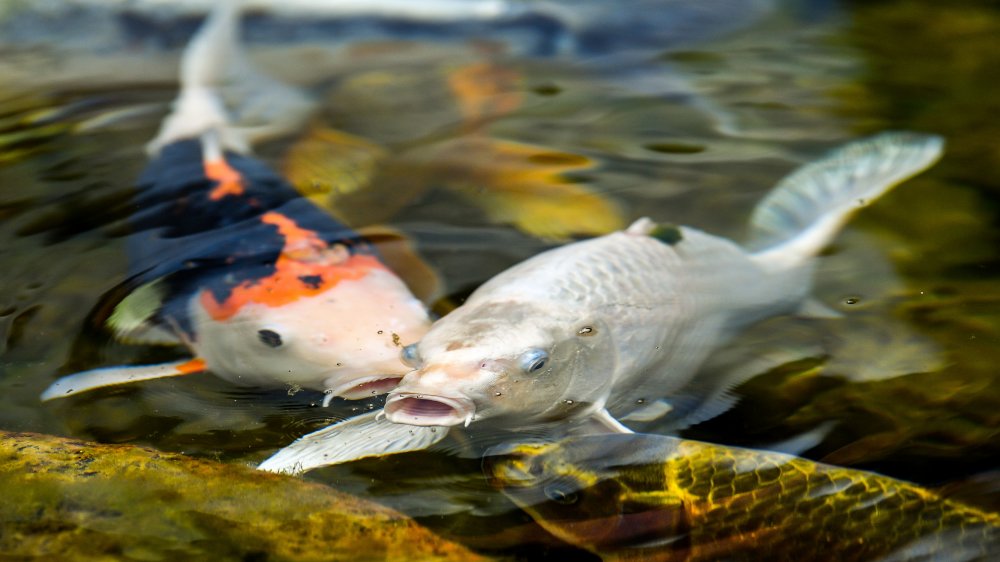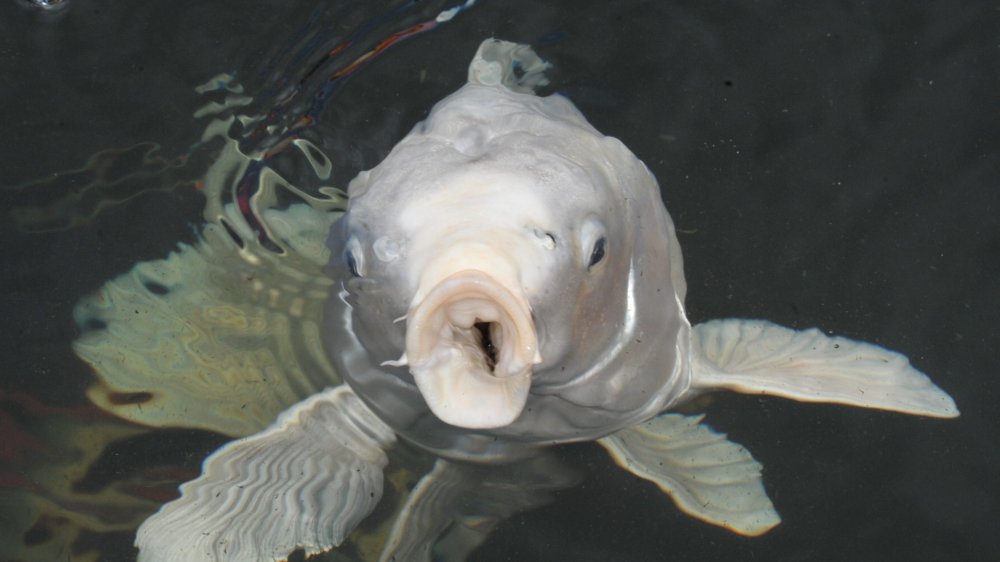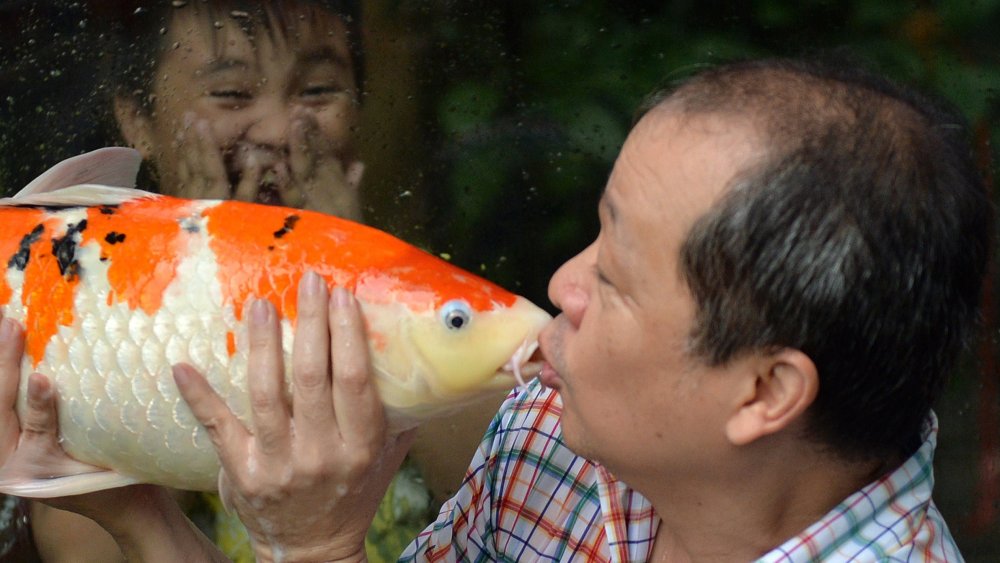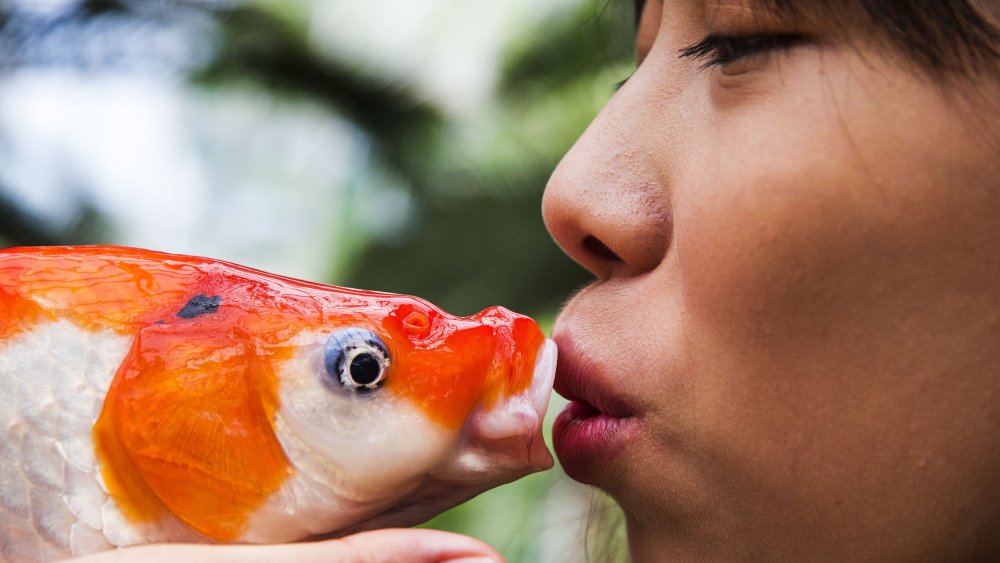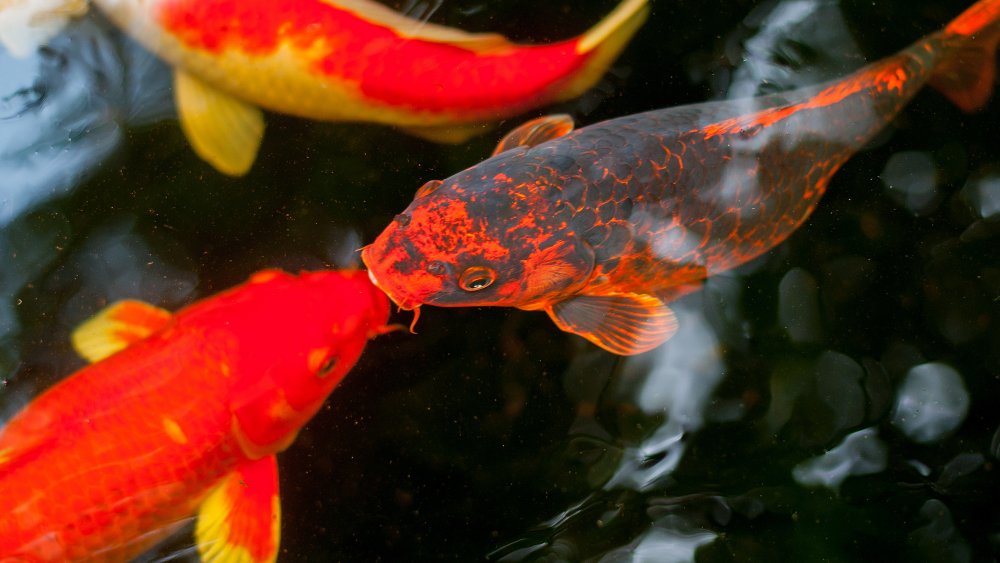Why Are Koi Fish So Expensive?
We've all been there: you're noshing on Manwich that you brought from home, walking down Santa Monica Boulevard, drinking in sunshine and positive vibes. You stumble across a seedy looking gentleman with a cooler full of what he claims are premium, Hanako-lineage koi fish. "Heritage koi," he says, stepping into your eye line. "You like show koi? Got a fat stack of koi right here. Twenty bucks for a koi. Fifty for three." Your Manwich isn't really doing it for you, so you haggle the guy down to $17 and nab yourself a premium show carp with papers going back to the late nineteenth century.
Everything's going great until you take your first bite and realize that what you've bought isn't a Gosanke koi, but a big kielbasa that somebody painted orange and glued little google eyes to. You turn around to confront your grifter, but he's already in the wind. You sigh. Why is it so hard to get koi at a reasonable price in this town?
Koi breeding is an art
A premium koi fish is like an expertly cut diamond or a Robert Downey, Jr movie: it's expensive because a lot of talented people worked hard to create it, yes, but also because that's just how things have been done for a while. It's not necessarily because it's objectively good.
The practice of breeding fish for their color goes back over a thousand years, with ancient Chinese artisans starting to selectively produce neat looking carp on a painstaking generation-by-generation basis as far back as the second century AD in order to give us, and this is true, ten cent goldfish. According to Bonsai Empire, by the 1800s, specialized lines of carp were being raised by breeders in Japan for their color patterns, size, and longevity. In keeping with their distant cousins, the fairgrounds plastic bag prize goldfish, they made potentially low maintenance pets, surviving in a wide range of temperatures and subsisting on pretty much whatever food you threw at them. But as with dogs, livestock, and most other animals whose genetic code mankind has gone She's All That on, the money started rolling in when people made them look weird.
Koi are beautiful
Today, a koi, or aquarium fish's value is largely based around the massive amount of time and effort that goes into their good looks. Breeders strive for bold, solid, uniform colors that run deep through the creature's scales. A patch of color that's made up of three scales or fewer is considered a blemish, and any self-respecting koi would be better off swallowing bleach than showing up to the fish gala with one of those.
No, the discerning koi connoisseur strives for distinct, large, unblended coloration. A particularly well defined koi sold at auction in 2018 for £1.4 million. Other factors like size and lineage can easily put the little fellas in the six figure range.
Koi will stay with you forever
If that all seems like a bonkers amount of money to spend on a pet that will never, ever cuddle you back, take comfort in the fact that you can get some serious longevity out of the critters. While your average koi will live between 60 and 70 years when well taken care of, the outliers on the longevity scale are bananas. According to Fish Laboratory, Koi Hanako, a fish that died in 1977, was confirmed to have lived 226 years before giving up the ghost. That means that she lived long enough to inhabit the planet from the Revolutionary War to the bombing of Hiroshima and still make it another 32 years just to make sure she wasn't missing anything.
And while Koi Hanako was on the outside edge of fish life expectancy, she was in good company. In parts of Japan where koi are revered and not just stuck in fancy hotel fountains to give kids something to throw pennies at, it's not unusual for the befinned beasts to live for more than a century, passed down from generation to generation. Theories about what causes this exceptional vitality range from clearer waters to more attentive care.
Alternate theory: fish are easy to replace and the whole country has been running a multi-generational kindergarten hamster replacement scam for hundreds of years. Believe what you want to believe.
Plenty of koi in the pond
If you're considering dipping your toes in the water, getting a koi but not paying small-nation-GDP money, you can always get going with an unexceptional Petco starter koi, which will run you around seven dollars. Otherwise, just dive right in at the show carp auction. Regardless of how much you pay for one of these quietly noble animals, one fact remains true: they're all, per the Food Network, great in tacos.
